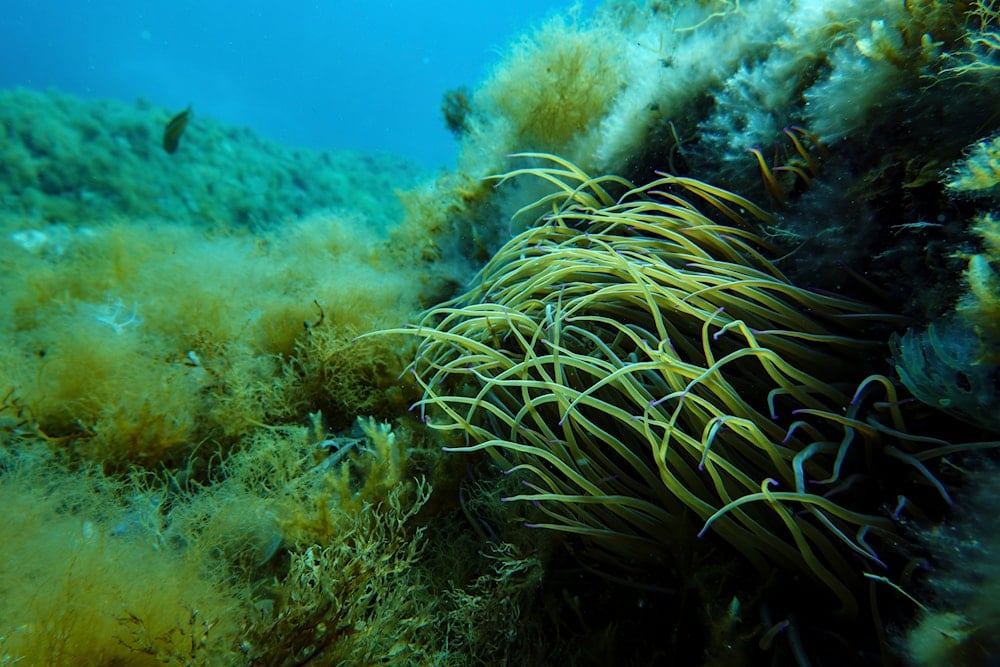Sea acidity reaches critical levels, threatening entire ecosystems
A new global study warns that ocean acidification has breached its planetary boundary, putting marine ecosystems at severe risk.
-

Anemone is visible in the protected area of France's Port-Cros National Park ahead of the U.N. Ocean Conference, on June 7, 2025 (AP Photo/Annika Hammerschlag)
The world’s oceans have crossed a critical threshold of acidification, scientists warned today, placing global marine ecosystems under severe threat. A new study confirms that ocean acidification, driven by rising carbon dioxide levels, has breached its planetary boundary, highlighting a worsening ocean acidification crisis that experts say could have catastrophic consequences for biodiversity and coastal economies.
Ocean acidification, often referred to as the "evil twin" of the climate crisis, occurs when CO₂ is absorbed by seawater, leading to a drop in pH levels. This disrupts the chemistry of the ocean and endangers marine species that depend on calcium carbonate to build shells and skeletons.
A new study by UK and US researchers found that the ocean’s planetary boundary for acidification was breached around 2015. Using 150 years of data and advanced modelling, they revealed that by 2020, global ocean conditions had already crossed the safety threshold, defined as a 20% drop in calcium carbonate levels. At 200 metres, 60% of the waters had exceeded this limit.
“Ocean acidification isn’t just an environmental crisis, it’s a ticking time bomb for marine ecosystems and coastal economies,” said Prof Steve Widdicombe of PML and co-chair of the Global Ocean Acidification Observing Network.
Impact on coral reefs and marine life
The study’s authors warned that the acidification impact on coral reefs and shell-forming marine species is likely to be far worse than previously understood, especially in deeper waters where the majority of ocean life resides.
“Most ocean life doesn’t just live at the surface,” said Prof Helen Findlay of PML. “The waters below are home to many more different types of plants and animals. Since these deeper waters are changing so much, the impacts of ocean acidification could be far worse than we thought.”
Key marine species like corals, molluscs, oysters, mussels, and sea butterflies show signs of acidification stress, thinner shells, stunted growth, and reduced reproduction. As foundational species, their decline endangers entire food chains and ocean health. The loss of coral reef systems, both tropical and deep-sea, also threatens critical habitats, fisheries, and coastal livelihoods.
Researchers emphasized that reversing ocean acidification requires steep cuts in carbon dioxide emissions. However, they also called for urgent local conservation efforts targeting the most vulnerable ecosystems and species.
Jessie Turner, director of the International Alliance to Combat Ocean Acidification, called the findings a wake-up call, warning: "We are running out of time, and what we do, or fail to do, now is already determining our future."
Read next: England's water firms saw 30% rise in pollution incidents in 2024
She added, "We are coming to terms with an existential threat while grappling with the difficult reality that much suitable habitat for key species has already been lost. It’s clear that governments can no longer afford to overlook acidification in mainstream policy agendas."
With this latest data, climate change ocean effects must now include ocean acidification as a central concern, not just for scientists and environmentalists, but for global policymakers and economies alike.

 3 Min Read
3 Min Read











